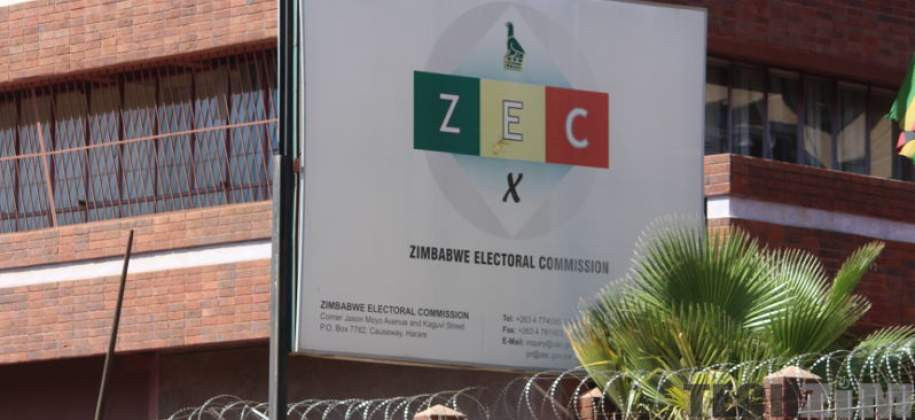
IN the turbulent world of commodities, few stories have as much potential to reshape regional trade dynamics as the recent slide in coke prices on international markets.
Coke, a vital ingredient in steelmaking and a significant export for Zimbabwe, has been facing declining prices since mid-2023.
This trend has stirred up concerns about the future of Zimbabwe’s coke industry and its competitiveness, particularly in its key market, South Africa.
The recent decline in international coke prices presents a significant challenge for Zimbabwean coke producers, particularly in its efforts to compete in the South African market.
The global coke market in freefall
In March 2024, the global metallurgical coke market experienced a notable downturn, with prices plummeting due to a combination of weak demand from steel mills and increasing supply.
For instance, Australian premium hard coking coal prices dropped by 10% week-on-week to US$245 per tonne, reflecting a broader trend of oversupply and reduced purchasing interest from major consumers like China and India.
Similarly, Chinese met coke prices fell significantly, with assessments indicating a price of US$335 per tonne, down from previous highs.
- Zim’s poor batting hands India series
- Proposed raids on grain farmers raises stink
- Wheat growers urged to increase production
- Is Zimbabwe ready for green building standards?
Keep Reading
This decline is not merely a temporary blip; analysts from S&P Global have revised their forecasts for Australian coking coal prices to US$283 per tonne in 2024, down from an earlier estimate of US$289, indicating a sustained period of low prices driven by ongoing weak steel market conditions.
The expectation is that prices may not rebound above USUS$300 per tonne this year, further complicating the competitive landscape for coke producers in Zimbabwe.
Global steel demand, particularly in Europe and Asia, has not rebounded as strongly as expected after the pandemic-induced slumps.
According to the World Steel Association, global steel demand is expected to have grown by only 1% in 2024, a far cry from the robust growth figures seen in previous years.
This has directly impacted coke prices, as steel mills the primary consumers of coke have scaled back their raw material purchases, opting to run down existing inventories instead.
The knock-on effect has rippled through to exporters like Zimbabwe, who have been caught in the crossfire of these shifting economic tides.
Zimbabwe's position
With falling prices globally, Zimbabwe's coke, which has a higher base price due to the local retention policy and other cost factors, is at risk of losing its market share unless strategic adjustments are made.
The country's coke producers have to contend with not only lower global prices, but also the logistical and operational challenges of a landlocked nation.
This situation is exacerbated by the fact that South Africa, with its more developed infrastructure and larger market, can often source cheaper imported coke, making it difficult for Zimbabwean producers to compete on price.
Zimbabwe’s coke industry has traditionally held a competitive edge in the region, driven by its abundant reserves in Hwange and relatively lower production costs.
In recent years, Zimbabwe has emerged as a key supplier of coke to South Africa, one of the largest steel producers on the continent. South African steelmakers have become the major market for Zimbabwean coke due to proximity.
One South African steelmaker now purchases 80-85% of Zimbabwe's coke production.
However, with international prices falling sharply, the picture is changing. Some pundits suggest that the weakened Chinese economy will continue to take strain for at least another two years, dashing hopes that this will be a short-lived drop in prices. Zimbabwe’s coke prices have historically been pegged to international benchmarks.
Thus, when prices in the global markets decline Zimbabwean coke producers face immediate pressure to lower their prices to remain competitive.
This is not without consequences. The narrowing profit margins could impact the sustainability of coke production in Zimbabwe, where infrastructure challenges, high transportation costs, and inconsistent electricity supply already pose significant hurdles.
It could also mean that the increasing price discrepancy of Zimbabwean coke relative to other sources is becoming a significant challenge, especially as particularly as coke prices in other markets, like Australia and Colombia, continue to fall due to global oversupply and weak demand.
A factor contributing to Zimbabwean coke's uncompetitive pricing is a foreign earnings retention policy that mandates exporters to retain 25% of their foreign currency earnings.
This policy requires that a portion of the foreign currency earned from exports be converted to local currency, the Zimbabwean dollar (ZWL), at an official rate (ZIG).
For coke producers, this effectively reduces the amount they receive per tonne in USD terms. Some coke producers in Zimbabwe have expressed concerns that due to this retention policy, they are effectively earning less than the price they are charging.
This financial burden limits their ability to lower prices further, putting them at a disadvantage in the international market.
If the policy remains unchanged and Zimbabwean coke remains uncompetitive, there is a risk that buyers will seek cheaper alternatives overseas, which could potentially collapse the local coke industry.
SA market dynamics
For South African steelmakers, the falling prices of coke present a double-edged sword. On one hand, lower international prices are an opportunity to reduce input costs in an industry that is struggling with high operational expenses, electricity supply issues, and aging infrastructure.
The prospect of cheaper imported coke from global markets could seem attractive.
For instance, imports from countries like Australia, Zambia or Colombia, which have robust supply chains and better pricing power, could start making economic sense even with added shipping costs.
On the other hand, there is a longstanding trade relationship between South Africa and Zimbabwe that adds another layer of complexity.
The logistical proximity and shorter lead times of Zimbabwean coke gives it an advantage over more distant competitors.
However, if Zimbabwe cannot match the falling prices due to its own cost structure, South African buyers may be forced to look elsewhere, potentially souring a crucial regional trading relationship.
Potential impacts on Zim’s industry
The adverse impact of the foreign currency retention policy on the pricing of Zimbabwean coke cannot be overstated. Should the situation remain unchanged, Zimbabwe's coke industry could face severe consequences, including a reduction in workforce, delayed capital investments, or even scaling down of operations.
For a country already grappling with economic challenges, the collapse of such a significant industry could have far-reaching socio-economic implications.
The key question is: how low can Zimbabwean coke producers go? There may be little room to manoeuvre.
Producers could be forced to cut costs aggressively, potentially leading to a reduction in workforce, delayed capital investments, or even scaling down operations — a scenario that could have far-reaching socio-economic implications for a country already grappling with economic challenges.
Moreover, if Zimbabwe fails to remain competitive in the South African market, it could potentially lose a significant share to more agile competitors.
African steel demand is expected to grow modestly at around 2,5% per year through 2025.
Missing out on this demand growth could be detrimental to Zimbabwean exporters, especially as other regional players, such as Mozambique and Zambia, begin to ramp up their own production capacities and seek to capitalise on regional trade opportunities.
What can be done?
So, what can Zimbabwe do to navigate these choppy waters? Zimbabwean coke producers should urgently look at ways to optimise their production processes.
This could involve investing in more efficient technologies, renegotiating energy tariffs, or seeking innovative ways to cut transportation and logistics costs.
Collaboration with South African steelmakers to create joint ventures or long-term contracts could also provide a buffer against price volatility.
Next, Zimbabwe should explore leveraging regional trade agreements under the African Continental Free Trade Area (AfCFTA) to secure better terms for its coke exports.
Enhanced market access, reduced tariffs, and regulatory harmonisation could provide Zimbabwean exporters with a needed competitive edge.
The falling coke prices on international markets are a wake-up call for Zimbabwean coke producers.
The South African market, long a reliable partner, could become more competitive as buyers seek the best deals amid uncertain global economic conditions.
For Zimbabwe, the path forward will require strategic thinking, investment in efficiency, and a willingness to adapt to the rapidly evolving landscape.
As global dynamics shift, the real question remains: can Zimbabwe turn these challenges into opportunities? The answer will determine not just the future of its coke industry, but its broader economic trajectory as well.
The situation is precarious, but with the right mix of policies, innovation, and regional cooperation, Zimbabwe has a chance to not just weather the storm, but to emerge stronger on the other side.
The future remains uncertain, but one thing is clear: the ability to respond to these price fluctuations will determine the sustainability of Zimbabwe's coke industry in the years to come.
As stakeholders in both Zimbabwe and South Africa monitor these developments, the conversation around competitiveness, pricing strategies, and market dynamics will undoubtedly continue to evolve.
Didiza is the head of stakeholder management, communication and the foundation at ArcelorMittal South Africa. He is also the spokesperson of the company.











